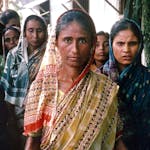Description
In this course, you will learn:
- How humanitarian disasters can have an impact on children's development and well-being.
- What do risk and resilience entail in terms of child development and protection, and what variables influence them on an individual, family, community, and societal level?
- When constructing interventions, it's critical to consider topics like context, agency, connections, and prevention.
- How to evaluate diverse approaches to child protection in humanitarian emergencies objectively and find areas for improvement in practice.
Syllabus:
- Welcome to the Course
- Getting to Know Each Other
- How to Take This Course
- (Optional) Introduction to Humanitarian Child Protection
- Child Development, Adversity, and Resilience
- Child Development
- Childhood Adversity
- Resilience in Children
- Relating the Science to Child Protection
- Unlocking the Protective Potential of Social Environments
- Supporting Children's Agency
- Working with Children in Different Cultural Contexts
- Children's Agency and Participation
- Fostering Child Agency
- Do No Harm
- Enabling Families as Protective Environments
- Families in Different Cultural Contexts
- Impact of Humanitarian Crises on Families
- Interventions to Support Families During and After Crises
- ‘Do No Harm’ Issues
- Enabling Communities as Protective Environments
- Communities As Resources and Risks for Children
- Ways of Engaging with Communities
- How Community Approaches Can Support Child Protection in Education
- Enabling Protective Social Norms and Policies
- Social Norms
- Approaches to Social Norms Change
- Children's Policies
- Approaches to Changing Policy
- Enriching and Transforming Practice
- Bringing Together the Science of Childhood Adversity and Child Protection Practice
- Identifying Barriers to Transformation
- Identifying Opportunities for Transformation









